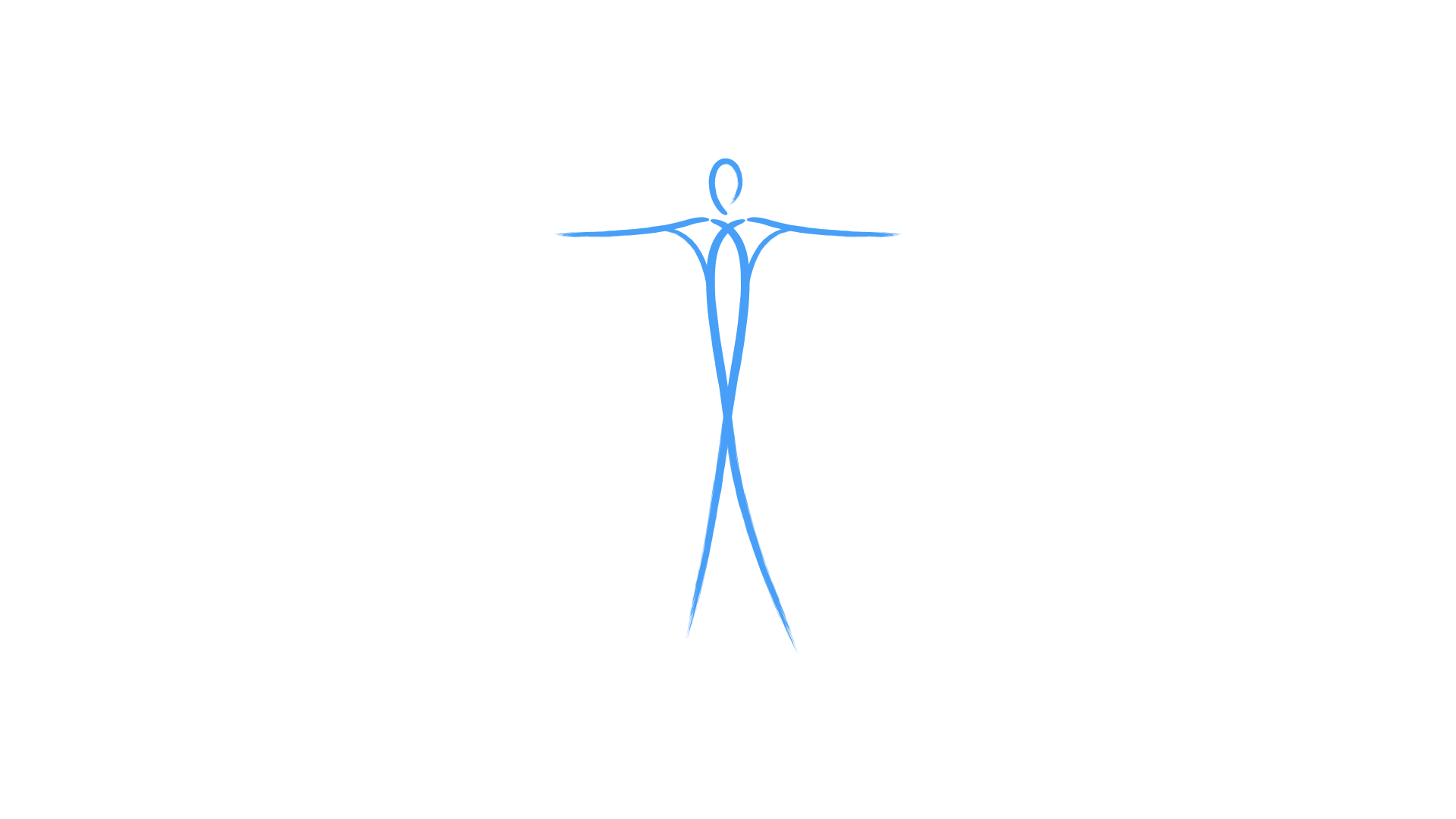Spirals in the Arms: How to Achieve a Dynamic Dance Hold
Spiral arrangement of human voluntary musculature is not limited to the torso and neck, but it also continues into the limbs. In this article, we will explore how spirals in the arms help us achieve a stable, yet flexible dance hold.
First, let’s revisit the concept of primary and secondary curves by performing the following exercise:
While standing, drop the gaze towards the sternum, allowing the head and upper back to follow into primary. Notice that when you don’t interfere, the arms will start to rotate forward in the shoulders. Come back to standing position.
Now do the opposite: start looking up, allowing the head to follow and move the torso into secondary. Notice that when doing this, arms naturally rotate outwards, towards what we call “anatomical position”.
Red arrows represent primary and blue arrows represent secondary.
This simple exploration demonstrates that arms can also be moved towards primary or secondary. Moreover, the movement of the arms will influence the torso accordingly.
Now, let’s complicate things a bit. Open the arms to the side, about the shoulder height, and ever so slightly engage the forward rotation in the shoulders towards primary (don’t allow the upper back to hunch forward). While maintaining the primary in the shoulders, start to rotate in the forearms towards secondary, thus feeling the opposing spirals through both arms. Now bend both arms towards a dance hold from the lead’s perspective.
Now, let’s do the opposite. Open the arms to the side again, shoulder height, and engage the secondary in the shoulders (outward rotation), this time allowing the torso to respond with slight secondary engagement (typical of a follow in ballroom). While maintaining this engagement, rotate the forearms towards primary. Bend the elbows towards a dance hold from the follow’s perspective.
Notice now how these two versions fit together to form a dance hold between two partners. This spiral arrangement allows for a natural tone in the frame without creating rigidity or feeling of overpowering the partner. It also gives a sense of lift through the torso and the frame, giving a strong but flexible foundation for partner dancing.
Red lines represent primary and blue lines represent secondary.
This approach to finding a dance hold was a direct result of the exploration and exchange of ideas my partner and I did with Rebecca Nettl-Fiol during one of our many sessions, in which we compared Alexander Technique principles with ballroom technique. In my long dance career, I have never been introduced to this view of the dance hold, even though it makes perfect sense. For those of you fluent in the AT, did you notice the similarities between the follow’s arrangement of the arms in dance hold and the traditional AT procedure of Hands on the Back of the Chair? It just shows how closely these disciplines are related, and how knowledge of the AT can help ballroom dancers understand better what they are trying to achieve through their practice.
Cover photo by James Hosking







